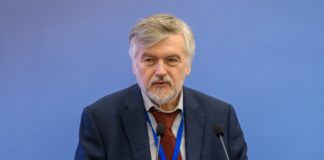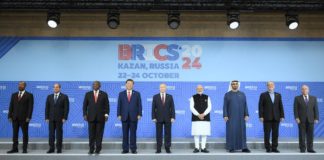Russian geographers and economists have been asking the question for centuries: is Russia’s space a blessing or a challenge? In 2019, the Strategy of Spatial Development of Russia was adopted. In the new geoeconomic reality, this question has become even more relevant, since the sustainability of the Russian economy depends on those territories that were not always a priority before. Since then, in addition to the much-talked-about COVID, significant changes have occurred in the global geoeconomic system, so it is understandable that this document is now being revised.

Key settlements
The Government of the Russian Federation plans to approve a new Strategy of Spatial Development by the end of 2024. The main innovation of the new document: the concept of a «single list of key settlements» has appeared. As Olga Kuznetsova, chief researcher at the Institute of Economic Forecasting of the Russian Academy of Sciences, explained, the previous Strategy was based on «economic growth centers», which primarily meant large urban agglomerations, while in the new approach the authors are attempting to cover the entire spectrum of possible growth points, including in rural areas.
However, according to Professor Kuznetsova, this list raises a lot of questions. For example, the legislation currently does not regulate what is considered a rural area and what is a city. The only document that defines a populated area is the Road Traffic Regulations, and otherwise the 1982 document is in effect, which in most cases is no longer taken into account. The same applies to the definition of an urban agglomeration.
«The unified list of supporting populated areas that is currently being formed will require much more active participation, including from the research community, because the idea itself, as always, is not bad, but the whole question is how this list will be formed. And this idea can be turned into a very bad thing if these core settlements are identified incorrectly,” the economist noted.
It is important, first of all, to change approaches to solving the problems of polarized development, believes the director of the Institute of Economics and Industrial Engineering of the Siberian Branch of the Russian Academy of Sciences, member of the Presidium of the Russian Far East Economic Society, and academician of the Russian Academy of Sciences Valery Kryukov. It is not only and not so much about settlements, but about the development of economic activity from east to west, from the periphery to the center. “We need to move away from the central-peripheral model of socio-economic development, which leads to fragmentation. The problem of connectivity and integration is extremely acute for the eastern territories, and supporting core cities and settlements does not solve this issue at all,” academician Kryukov believes.
The northern latitudinal projection of the North-Western Federal District is losing population, which leads to locational compression and desertification of vast territories that were once developed, said Alexandra Shabunova, director of the Vologda Scientific Center of the Russian Academy of Sciences. According to the data cited by the economist, the infrastructure of the Northwestern Federal District has developed a very unfavorable situation with motorways. This reduces the connectivity of territories, increases costs and becomes one of the factors of human outflow.
In 1990, the share of the population living in 16 cities with a population of over one million was 19.7%, in 2023 — 24.3%. The number of residents of the Moscow region increased by 38%, in the St. Petersburg agglomeration — by 14%, in the Krasnodar Territory — by 25%.
Compression of territories
The problem of spatial development, which has not yet found a solution in the Strategy, is the compression of developed space, believes Olga Kuznetsova. Just as industrialization pushed a huge number of people from rural areas to cities, the growth of labor productivity in agriculture and traditional industries, as well as the emergence of a host of new modern and interesting types of activity, drives people to the largest cities.
«On the one hand, the task is to ensure sustainable development, a sustainable settlement system, to prevent the outflow of population from small towns, rural areas, from the east of the country. On the other hand, they want to achieve migration mobility in order to provide jobs for new growth points. Now they are talking about the emergence of new experimental settlements. But where can we get people from, except by further emptying out those settlements that are already losing population?» the economist asks.
Uneven development of regions and a decrease in the sustainability of the national settlement system are among the main strategic threats to national security in the field of economy, said Vice President of the VEO of Russia, First Deputy Chairman of the Committee of the Federation Council of the Federal Assembly of the Russian Federation on Budget and Financial Markets Sergey Ryabukhin. According to the senator, the Spatial Development Strategy should become the basis for approving the rational use of the spaces of the Russian Federation at the state level and consolidating industry strategies and state programs. «We propose considering the issue of the advisability of creating a research institution subordinate to the Ministry of Economic Development for the study of productive forces, organization and coordination of scientific support for state policy, regional and spatial, development of the economy of the Russian Federation,» said Sergey Ryabukhin.
Scientific and technological space
In the new geoeconomic conditions, it is very important to determine the spatial components of scientific and technological policy, but today this is, in fact, terra incognita: this issue, with the exception of a very limited circle of specialists, has only recently been addressed, said Olga Kuznetsova. She explained that in the area of spatial aspects of technological policy, there is complete chaos now, although there are many tools to support scientific and technological development: science cities, scientific and technological centers, technology parks, and state scientific centers. According to the scientist, how decisions are made about where to create all this and how these decisions relate to each other is unclear.
«Of course, all scientific territories, all territories that have scientific and technological potential, should fall into the field of interest of the federal authorities. Today, the country cannot afford to ignore those territories where such potential exists. Naturally, in relation to regions where there is no such potential, it is necessary to solve the problems of technology transfer,» Olga Kuznetsova believes.
In this regard, Senator Sergei Ryabukhin proposed creating territories with special conditions for scientific, technical and innovative activities in the science cities of the Russian Federation, similar to the legal regimes established for Skolkovo.
The share of rural settlements without people or with a few residents increased from 16 to 31% from 1989 to 2021. The number of cities increased by 7.7% during the same period, and the number of city residents by 8.5%.
Rural life
How is the issue of rural areas addressed in the new Strategy? Currently, the situation in Russian villages is mainly typical for economically underdeveloped countries, when the population is concentrated mainly in relatively large and largest urban agglomerations, and the formation of rural agglomerations is in many ways reminiscent of the liquidation of unpromising villages in the 1960s and 1970s, from which the Russian village has not been able to recover until recently. This is the opinion of the head of the section of economics, land relations and social development of the village of the Department of Agricultural Sciences of the Russian Academy of Sciences, Academician Anatoly Altukhov.
Academician of the Russian Academy of Sciences, Director of the All-Russian Institute of Agrarian Problems and Informatics named after A. A. Nikonov Alexander Petrikov is sure that there is still no consensus in society and the state on what to do with the village, although in the advanced countries in socio-economic terms, so-called rural pacts have been adopted — public agreements on how to act in relation to the village, to spend resources on it or not, because the market demonstrates its failures in relation to small settlements.
«It is impossible to automatically solve rural problems, as well as the problems of small towns, by involving them in the zone of influence of the national global market, in the zone of influence of large urban agglomerations. A special rural policy is needed, which has been carried out there since about the turn of the 1970s, which requires costs from society,» notes Academician Petrikov.
A scientific approach is needed
Academician of the Russian Academy of Sciences Abel Aganbegyan is confident that scientific and methodological support is needed to implement the Spatial Development Strategy. The scientist recalled that Vladimir Vernadsky created the Commission for the Study of Natural Productive Forces (KEPS) in 1915. This was the only organization of the Academy of Sciences that existed directly under the Presidium, and it was headed by great scientists. KEPS was renamed SOPS, which later merged with the State Planning Committee and was engaged in the development of productive forces of Russia within the framework of the five-year plan.
«In Russia, the planning organization that deals with spatial development has been completely eliminated, and their number has sharply decreased by industry. Previously, each ministry had divisions that dealt with spatial development of at least their industries. Such organizations need to be recreated,» Academician Aganbegyan believes.
The proposals to recreate the scientific center for regional studies, which KEPS and SOPS once were, were supported by the moderator and head of the scientific forum «Abalkin Readings» Academician Boris Porfiryev, head of the economics section of the Department of Social Sciences of the Russian Academy of Sciences.
«The development of a spatial development strategy is a significant step forward and a necessary, but insufficient condition for achieving national development goals. Therefore, it is important to continue the joint efforts of scientists and practitioners aimed at solving those issues that still remain unsatisfactorily answered in the draft Strategy, and then — to implement it in order to ensure sustainable growth dynamics and improve the quality of life of people in all regions of the country,» the RAS academician emphasized.
Sergey Bodrunov,
President of the VEO of Russia, Corresponding Member of the Russian Academy of Sciences«The sustainability of economic growth is directly related to spatial development. Reducing interregional differences in the level of the economy and social sphere, increasing the territorial connectivity of the country will allow us to achieve accelerated development of human, logistical, resource, scientific and technological potential. That is why issues of spatial development are currently in the focus of attention of the authorities, scientific and expert communities.»



